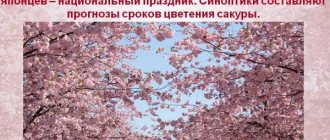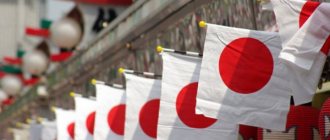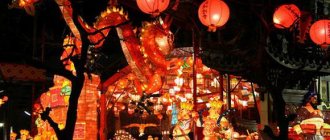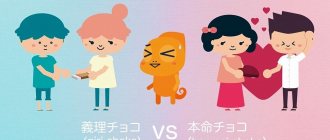History of Boys' Day in Japan
For a long time, future successors of the family have been given great attention and a kind of reverence. Boys' Day in Japan is not just a cultural event or event, its history goes back far into the past and carries the basis of mentality, culture and Japanese traditions.
In the first century of the last century, Japanese communities lived according to their own special rules and orders. They treated the spirits of nature with reverence and organized holidays for them. Every year on the fifth day of the fifth moon, decorated stuffed animals in fancy costumes were displayed in the fields. The people believed that such a bright color would scare away birds and attract a rich harvest. They believed that the brighter the scarecrow was decorated, the more fertile the year would be. Over time, the term fertility acquired a different level; it was believed that these were not only gifts of nature, but also new life.
This is how the “Horse’s First Day Celebration” appeared. Over the centuries, many legends and myths have been associated with this animal, and its natural strength, endurance and courage precisely characterize the spirit and inner qualities of a true warrior and samurai.
During the Nara era, the festival received a new name, “Iris Festival.” The fact is that it was during the celebration that a beautiful flower, the Iris, bloomed all over the country. In the land of the rising sun, health and success are associated with it, important components for the future protector and successor of the family.
All about Japan
Japan is a country of brave samurai and brave shoguns. The whole world knows about their valor and courage. Legends and myths are formed about their exploits. Japan is proud of its warriors, so various celebrations are held in their honor in the country.
For example, in the 17th century, the favorite entertainment of the Japanese emperors was a sports festival at which brave samurai competed with each other in the art of fencing and shooting. And the emperor himself and his courtiers evaluated these competitions.
A little later, a similar holiday began to be held in the spring. It has become a symbol of spring, labor and prosperity. During the celebration, the Japanese worshiped the sacred spirits of herbs, trees and plants. The main person of the holiday was the Japanese Emperor.
During Heian times, the same holiday began to have a military-competitive character. And in the Edo era, it turned into a magnificent solemn event.
Currently, the country celebrates the Japanese Boys' Day on the fifth calendar day (May 5th) of the fifth moon. The Japanese call it the 1st Day of the Horse holiday. This is a traditional Japanese holiday. For the Japanese, the horse is a symbol of courage, bravery and courage. It is believed that every Japanese boy should have all these qualities. Only boys under fifteen years of age participate in this national holiday.
During the celebration, boys compete with each other in shooting, sword fencing, sumo, equestrian competitions, etc. Thus, from an early age, boys are raised to be brave warriors and brave samurai.
Today, during Boys' Day, it is customary to hang pictures of koi carp in the wind. An unusually colorful spectacle appears before the eyes of passers-by. Hundreds of colorful carp swim along an imaginary river. The Japanese consider carp one of the hardiest fish. There is a legend from which it follows that after the carp overcame the dragon waterfall, it itself turned into a large dragon and soared into the heavens. Posters with carp are wishes to all Japanese boys to cope with all difficulties and become real men. Depending on the age of the boy, the length of the fish may be longer or shorter. The longest carp indicates the oldest boy.
During the celebration, not only the streets, but also the houses are decorated. A large samurai figure is installed in the main room. Several other dolls are placed around. These are small figures of warriors. Here you can also see figures of animals: horses and tigers. They symbolize courage and fearlessness. Typically, such a composition is placed on several shelves covered with green fabric.
Above are the armor, flag and coat of arms of the owners of the house, this family. Just below you can see numerous drums, swords, armor, as well as several bottles of national Japanese sake and plates of traditional rice dumplings. The shelves are decorated with large vases filled with irises.
On the outside, houses are decorated with sharp iris leaves. Usually they are sprinkled on the porch, decorated with roofs or cornices. In this way, the Japanese protect themselves from troubles and demons.
During the celebration, parents and boys fly kites into the sky. At home, a festive dinner consisting of rice balls is prepared. The rice is wrapped in iris, bamboo and oak leaves. A variety of sweets are also prepared for boys.
In the evening, the whole family gathers around the doll composition. Adults tell children about the history and traditions of their family, as well as various legends about the brave Japanese wars.
Currently, boys' day is celebrated in Japan as Children's Day. But its significance has not been lost over time.
Basic traditions
Young men under the age of 15 take part in the festival. The first rituals were dedicated to honoring and respecting Nature, and were carried out only in open space. Decorated scarecrows were displayed in the fields and rituals were held in which they asked for a rich harvest and prosperity for the family. Prayers were offered to plants, flowers, trees; it has long been believed that they contain real masculine strength and energy.
After some time, the concept of “fertility” moved to a new level of understanding. In addition to prosperity in agriculture, this term meant healthy offspring and children. During the Japanese boys' holiday, scarecrows were no longer placed in the fields, and their making became a real art. Now bright stuffed animals were used to decorate the facades of houses and interiors.
Little Samurai Day
“Tengo-no-sekku”, or the First Day of the Horse - this is what this holiday was called in ancient times . The white horse in Shintoism is one of the central symbols. Even in ancient times, the Japanese staged ritual games, the meaning of which was to catch a white horse with their bare hands. Thus, dexterity and courage were demonstrated. This tradition is still alive; every year in Japan a grand festival of samurai art, Soma Nomaoi, is held, which attracts thousands of participants and spectators. At the end of the festival, this ancient ritual is performed.
Another name for the holiday is “Cebu-no-hi”, or Iris Festival . The iris is also a symbol of samurai virtues; it blooms in early May, and in ancient times there was a game among courtiers: whoever digs up the largest iris root will win.
Originating in a military environment, Boys' Day quickly gained popularity throughout the country. On this day, future warriors were given skillfully made copies of weapons and small armor. Samurai banners hung at the doors of houses. However, ordinary people did not have the right to such regalia, and therefore the custom arose among the peasants of hanging flags and the form of “koi-nobori” carp on poles.
Now carps have become an inseparable attribute of this holiday. Interestingly, “koi-nobori” can tell a lot about a family. The number of flags corresponds to the number of men in the house, the longest carp belongs to the head of the family, and the small ones belong to the children.
For the Japanese, carp is a symbol of perseverance and courage . This fish is able to overcome steep rapids on the river and swim towards the current. There is an ancient legend according to which the carp showed the way to the Japanese fleet during the campaign against China in the 2nd century.
How is Children's Day celebrated in Japan?
The numbers 3, 5, 7 indicate the age of the children; this age is a turning point in the life of young creatures. All boys who turn 3 or 5 years old this year, and girls who turn 3 or 7 years old this year, celebrate a “common birthday” on November 15th.
In Japan, it is generally accepted that with the birth of a child, a heavenly angel settles in the house and until the age of seven, the child is not a child, but a divine being. Therefore, children under 7 years old are not raised there at all and all their whims are indulged. The child is allowed to do everything. Whether this is good or bad is not for us to judge. Japan is famous for its customs and traditions that are different from the ideas of Europeans, but many people are interested in learning about them.
The main solemn moment of the holiday is the ceremony of visiting the temple. All parents whose families have children of this age take them to the temple in order to thank the gods for the fact that their children grow up healthy and happy.
March 3 is traditionally celebrated as Girls' Day. This holiday is also called Doll Day. On this day, in all houses where there are girls, dolls dressed in traditional kimono are displayed. This exhibition lasts for a whole month. Dolls are usually made of very expensive materials and are passed down from generation to generation, and are also a dowry for a young girl.
May 5th used to be celebrated as Boys' Day. On this day, a pole with the image of a carp is placed on the roofs of all houses. The number of carp depends on the number of boys in the family, and the size depends on their age. Carp in Japan is a symbol of courage, perseverance and valor. On this day, just like on Girls' Day, an exhibition of dolls is held, but not of royal beauties, but of valiant warriors and their weapons.
Since 1948, May 5 has been celebrated as Children's Day, which is national, although boys are still given preference.
During the celebrations, a Kite Festival is held. All the boys and men fly kites into the sky. The images on them are very different. Someone draws images of evil spirits, and, releasing the snake, firmly believes that all troubles in the future will pass them by. Others draw turtles and cranes, which are a symbol of longevity, in hopes of living a long, happy life. And the boys mostly pretend to be a carp and write their name, wanting to succeed in the future.
To celebrate this holiday, houses are decorated, children are given gifts, and everyone treats each other to traditional Japanese dishes with rice, which are a symbol of longevity and health, and are also said to ward off evil spirits. During the day, the parks host sports competitions for boys, where they can show off their skills and athleticism. In the evening, a ritual rite of thanksgiving is performed for the health of the children.
Tags: traditions, holidays, Japan
Origin of the holiday
The origins of the Tango no Sekku holiday, which literally means “First Day of the Horse Festival,” date back to the first century AD. At that time, the Japanese people were a conglomerate of related tribes, and life on a closed island space, taking place in a continuous struggle with the forces of the elements, put a man at the head of their worldview as the defender of life and the main breadwinner.
Thus, in addition to dates dedicated exclusively to men, a boy's holiday arose in Japan. The central character of Tango no sekku - the horse - symbolizes all the qualities inherent in real men. These are the qualities that an excellent warrior possesses - courage, speed, bravery and courage.
Tango no sekku was originally celebrated on the fifth day of the fifth moon of the Chinese calendar. Now it has a fixed date - May 5 - and is part of the so-called festive Golden Week.
During the Nara period, the festival was given a second name, "Shobu no sekku", literally meaning "Iris Festival". The second name reflects the qualities that popular belief attributed to the iris blooming at this time of year - health and success.
Until 1940, the holiday was called Boys' Day. After World War II, it changed its name to Children's Day.
Carp Day - Boys' Day
It is believed that this holiday came to Japan from China, like hieroglyphs and much more.
The original name of the holiday is Tango no sekku - Iris Blossom Day, another less romantic name is Horse Day, according to the lunar calendar, boys' day falls on the first day of the horse. In Japan, the holiday has been celebrated since the Taika reforms in the 7th century AD, that is, quite a long time ago. Initially, during the holiday, ritual dolls were made from wormwood in order to ward off illnesses from the child, and then they were burned or thrown into the river (remember the Hina Matsuri). Many centuries have passed since then, and Horse Day has changed a lot, and even the name now has a different name. In modern Japan, the holiday is politically correct called Children's Day, but in fact it is a holiday for boys - in fact, that is what it was called until 1948. Simultaneously with the new, albeit not entirely successful, name, the holiday gained the status of an official day off; in Japan, this is May 5 - the height of Japanese Golden Week, the longest renkyuu (long rest) of the year. This is often the only chance for hard-working Japanese employees to travel somewhere. Holiday traditions
Perhaps the most memorable event of boys' day are the carp (koi nobori), which symbolize the strength and courage of the young man. Carps are not live, but rags, and they hang them on long sticks from windows and on the roofs of houses so that they flutter in the wind. Usually the number of carp and their size correspond to the number and age of the sons, but sometimes they are hanged just like that, for company. They say that the holiday was originally celebrated among samurai, who hung banners in honor of future warriors. The simpler Japanese were forbidden to have their own banner, so they limited themselves to carp. The samurai and the banners disappeared, but the carp remained: history has always had an original sense of humor.
According to legend, a carp that can climb the waterfall will turn into a river dragon. Looking at the decorative carp splashing in Japanese ponds today, it is difficult to see potential dragons in the fat, lazy fish. Also, in Tochigi Prefecture on the island of Honshu, carp are not hung at all. The reason for this was the war for power between the Genji clan and the Heike clan, which ended in a grandiose massacre at sea almost 900 years ago. The remnants of the defeated Heike clan fled to the mountains of what is now Tochigi Prefecture. There, one of the fugitives of the former shogun Tadazane had a son in exile. To celebrate this event, the samurai cut out a carp figure from his kimono and raised it on a pole to ask the gods for health and strength for the future warrior. Unfortunately, the flag was spotted by Genji's men, and almost all of the Separatists were hunted down and killed. Since then, carp have been out of favor in this place.
In other Japanese prefectures, carp delight the eye for several weeks after the end of the holiday.
In many areas there is a custom of flying tacos (kites) on this day. Sometimes entire competitions are held, and then the sky is filled with carps, birds, and dragons. alternative history
By the way, in addition to the carp that became a dragon, there is a legend about its sea brother.
The stern Japanese Empress Jingu decided to rein in the careless Koreans and set off on a sea voyage, personally leading it. It must be said that the Japanese had no problem with navigation; more or less accurate coastal maps were compiled only for the main islands, and at least Ezo (modern Hokkaido) was a fair Terra Incognita. For obvious reasons, the cunning Chinese did not want to share the secret of the compass with the Japanese. As a result, the expeditionary forces were ready to completely lose their course and go somewhere to Easter Island. But at that moment a carp emerged from the sea and pointed the way to the enemy Koreans. As a result, the campaign ended very successfully for the Japanese and very sadly for the Koreans. And sea carp has since remained a symbol of good luck and the right path. Therefore, they are often hung on the mirror in the car and on a pendant for a mobile phone. Treats
On boys' day, special timaki rice balls are prepared.
They taste almost no different from regular onigiri, but instead of dried seaweed, they are wrapped in iris or bamboo leaves. This is also considered a symbol of health and resilience. Another rice dish is prepared with red beans. In Japan, a lot of things are made from rice and beans: from printer ink to sweets, but that’s not what we’re talking about. In the case of Boys' Day, red beans symbolize health. Gifts
Previously, in the distant past, practical Japanese made scarecrows from birds in the rice fields on Boys' Day, and since wood and rags don't care anyway, they used conspiracies to send illnesses and adversities into the scarecrows that awaited future warriors along the path of life - that's right, let the logs suffer . Then, instead of scarecrows, they began to make toy dolls in the form of elegantly made samurai and horses and give them to boys. It seems that Japan is the only country where it was customary for such a warlike nation to give dolls to children. Today, modern Japanese limit themselves to going with their precious child to the children's section of the supermarket for the next Pokemon.
What is noteworthy is that Boys' Day has absolutely nothing to do with the Japanese armed forces in general and the JSDF (Japanese Self-Defense Forces) in particular. Defenders of the Fatherland Day is a purely Soviet invention.
ANIME EXAMPLE:
Itazura na Kiss/Naughty kiss
“Naughty Kiss” is practically the only anime series that is fully suitable as an example for the three previous articles. The plot tells about the fate of the main character named Kotoko Aiharu from the moment she enters high school until the age of an accomplished, married woman with a child. The author of the story, mangaka Tada Kaoru, would probably have continued the plot even further if not for her tragic death in 1999. If you haven’t watched the anime series, then you could easily get acquainted with its plot through the Japanese “live” version of 1996, or the Taiwanese 2005.
For the most part, Itazura na Kiss is a teen comedy, but underneath the top layer of jokes and comedic situations lies the many everyday difficulties encountered in the life of a Japanese teenager. Over the course of 25 episodes, the viewer develops deep sympathy for the main character. Her struggle for respect and approval in the eyes of her lover evokes deep respect, and her pursuit of her goal evokes a little envy. By the end of the series, the plot, like a locomotive, is gaining momentum, and the viewer will witness that hard work in achieving the goal bears fruit. Unfortunately, the story does not have a solid ending, since the author planned to continue the story about Kotoko and Irie. But, let the readers forgive me for the spoiler, Itazura na Kiss is practically the only anime that shows not only the pre-marital life of the main characters, but also their post-wedding fate.
Celebrations in different historical periods
Traditionally, Japan, which has celebrated Boys' Day since the beginning of our millennium, has introduced certain changes to its celebrations every era.
During the Heian era, it was a sports festival that showcased the physical achievements of boys and men in various forms of martial arts.
During the Edo period, the festival of Tango no sekku acquired carnival pomp and widespread performance. From that time on, it was celebrated in all levels of society.
Gifts and offerings
Previously, the most desired gift for young warriors was children's weapons and armor. History has preserved several miniature sets of weapons intended as gifts to the sons of rulers.
Now the tradition has changed, and special “musya-ninge” dolls in the form of boys in armor are displayed for the holiday. As a rule, these dolls wear scarlet “o-yoroi” armor; in the Japanese poetic tradition, this is an attribute of a warrior who goes to his first battle. Warrior dolls often depict specific historical characters or heroes of children's fairy tales. Popular motifs: Minamoto Yoshitsune, who in his youth defeated the formidable monk Benkei with one blow of a fan, or the fairy-tale hero Kintaro, a child strongman.
Sometimes, instead of a warrior figurine, toy samurai kabuto helmets, small swords, medieval war drums, and fans are displayed.
On this day, it is customary to serve “chimaki,” a sweet rice treat wrapped in toffee leaves. This dish is a wish for resilience and health. The origin of “chimaki” is also connected with samurai culture: in ancient times, rice wrapped in leaves was thrown into the water so that the fish would not touch the bodies of warriors killed in sea battles.
Now Children's Day is a public holiday. In many parts of the country, festive events are held, and giant carp flags, sometimes more than ten meters long, are hung on the banks of rivers.










